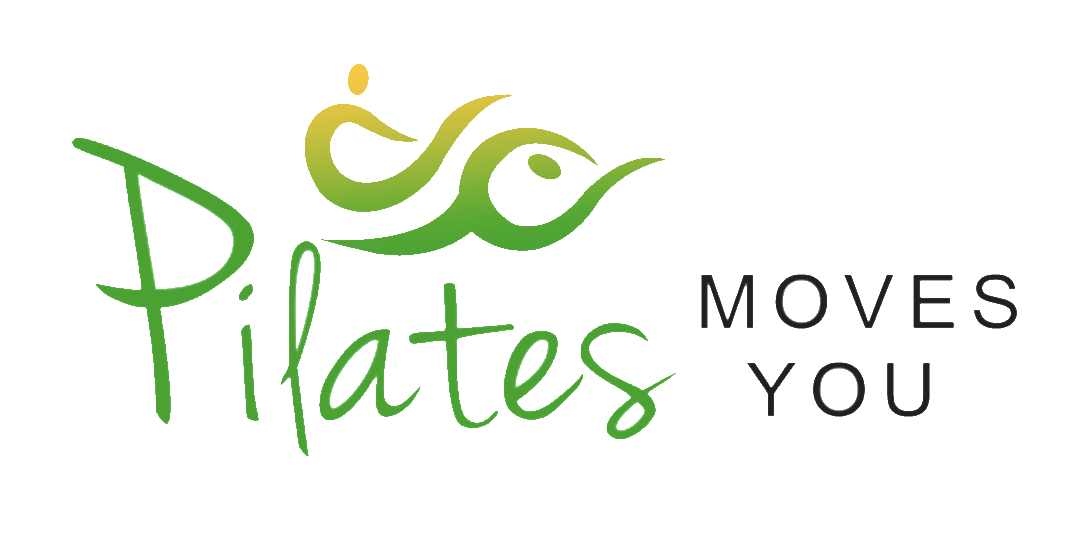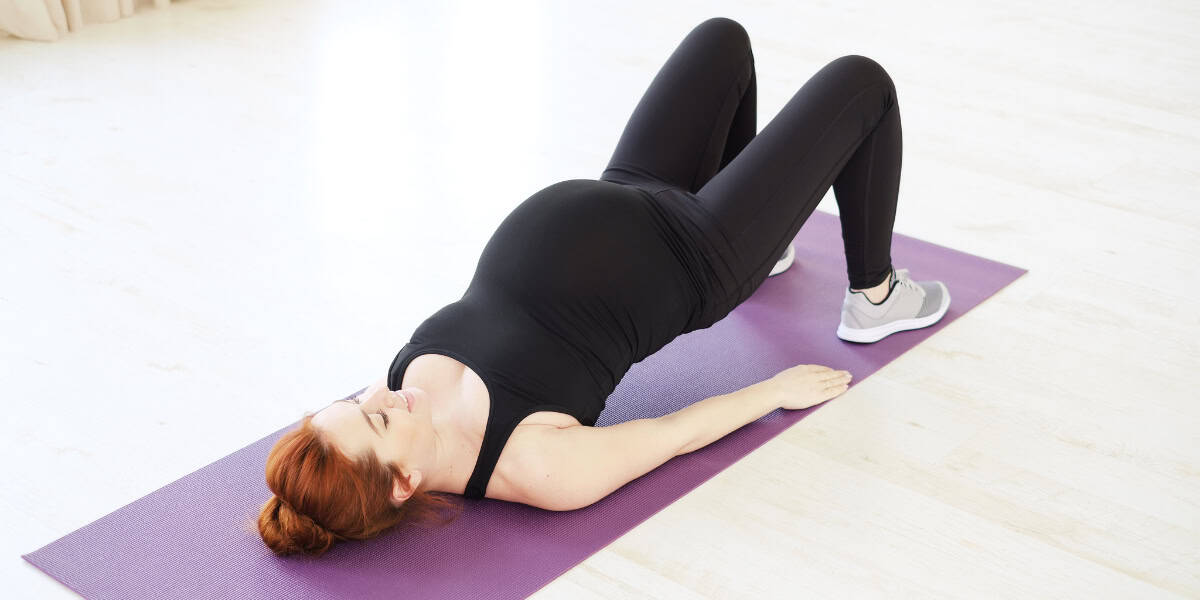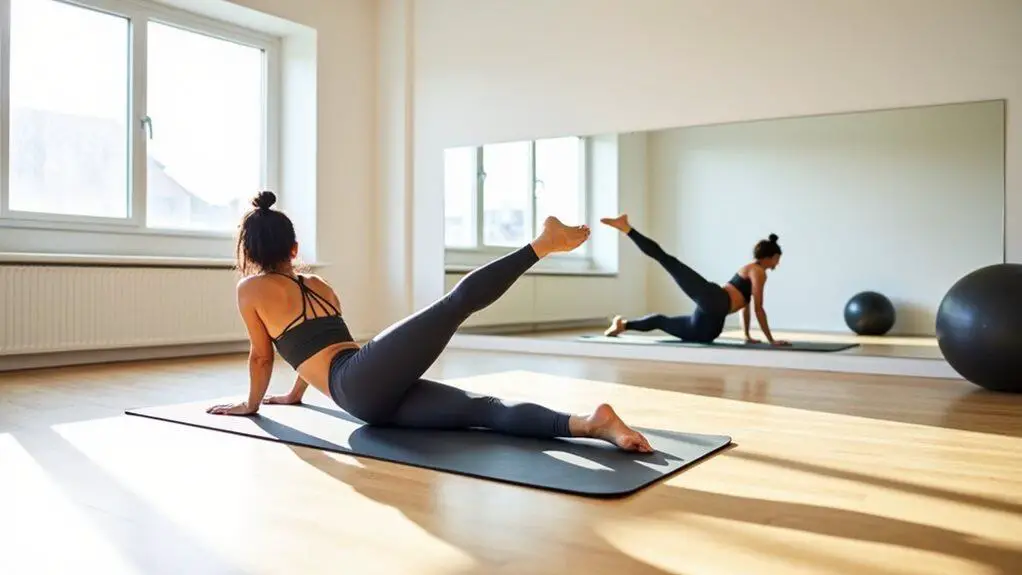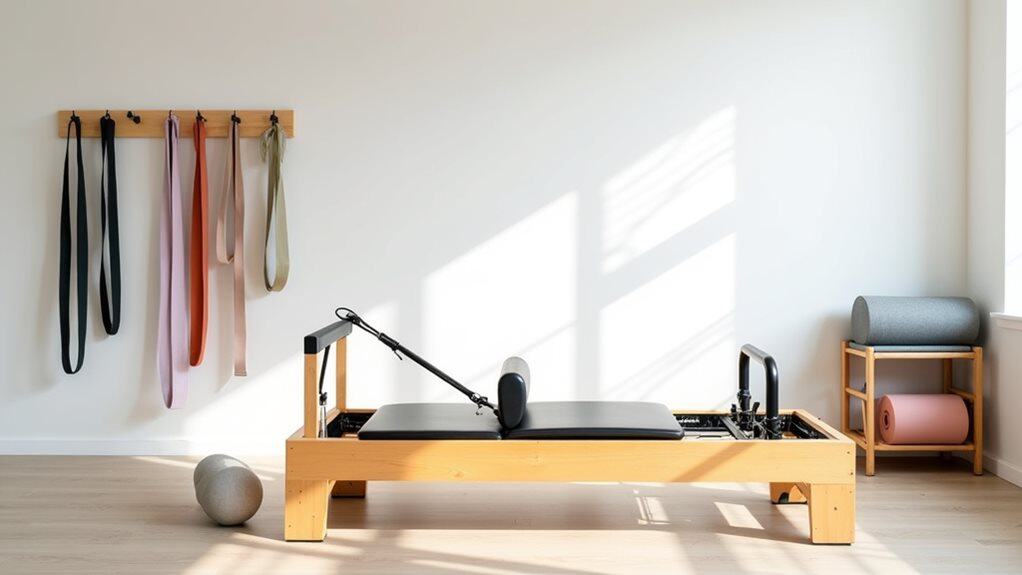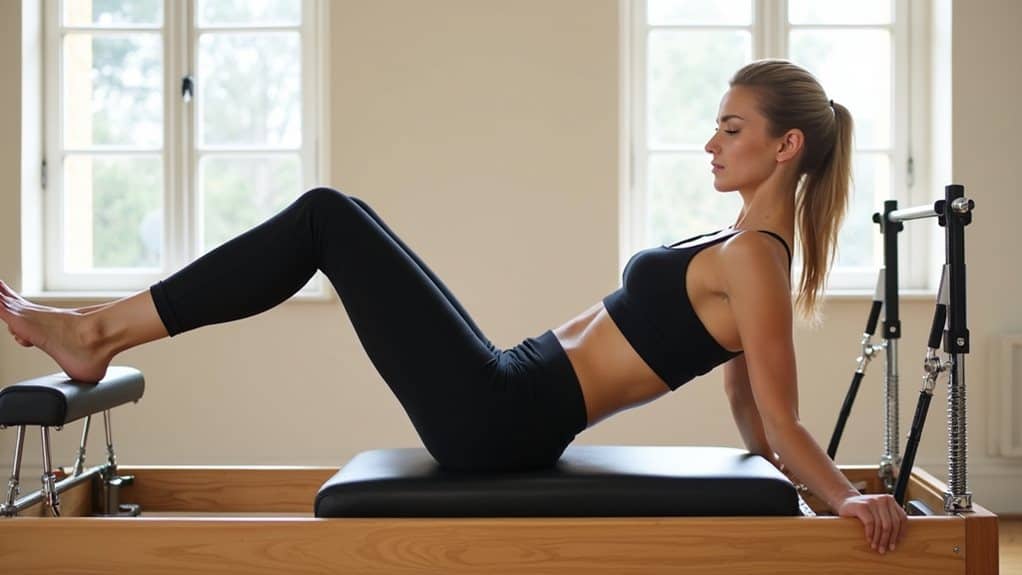You’re growing a little miracle inside you, and it’s an incredible feeling. But with that joyous growth comes a slew of changes to your body – some welcome, others not so much. Your daily routine has likely shifted as you adjust to the needs of your developing baby. But have you considered adding Pilates to your pregnancy repertoire?
Like a gentle breeze on a hot summer day, Pilates can support and empower you during this transformative time. Pilates is a low-impact exercise regimen that focuses on strengthening the core muscles while improving flexibility and posture. It’s perfect for expecting mothers because it’s easy on the joints and provides numerous benefits for both mother and baby.
By embracing Pilates during pregnancy, you can improve your overall health, prepare your body for delivery, and even reduce postpartum recovery time. Let’s explore the many ways in which Pilates can nurture both your body and baby during this exciting journey.
Understanding the Benefits of Exercise During Pregnancy
You’ll be surprised at how much exercise can benefit you and your growing baby during this crucial time. The importance of exercise during pregnancy cannot be overstated. Regular physical activity not only helps keep your body fit and healthy, but it can also reduce the risk of complications such as gestational diabetes, pre-eclampsia, and postpartum depression.
Additionally, exercising during pregnancy can help improve circulation, boost energy levels, and promote better sleep. On the other hand, a sedentary lifestyle comes with its own risks. Lack of movement can lead to weight gain, muscle weakness, poor posture, and even increased risk of blood clots.
It is important to note that every pregnancy is unique and some women may have specific medical conditions that limit their ability to engage in physical activity. However, for most expectant mothers who are able to exercise safely under the guidance of a healthcare professional or certified instructor, regular physical activity is highly recommended for both mother and baby’s health.
With all these benefits in mind, it’s time to introduce you to Pilates – a low-impact form of exercise that has become increasingly popular among pregnant women due to its numerous benefits.
Introduction to Pilates
If you’re looking for a low-impact exercise that can help strengthen your core and improve your posture, then Pilates might just be the perfect fit for you.
Pilates is a form of exercise that focuses on controlled movements, breathing techniques, and body alignment. It’s designed to help you develop strong muscles without putting too much strain on your joints.
There are many benefits to practicing Pilates, including improved flexibility, increased muscle strength and tone, better balance and coordination, and reduced stress levels.
Additionally, Pilates can help alleviate back pain and other discomforts associated with pregnancy by strengthening the muscles that support your spine. By incorporating Pilates techniques into your fitness routine during pregnancy, you can prepare your body for childbirth while also enjoying numerous physical and mental health benefits.
Benefits of Pilates During Pregnancy
Get ready to experience stronger muscles, better balance, and coordination, reduced stress levels, and relief from pregnancy discomforts as you incorporate Pilates into your fitness routine. Pilates is a low impact exercise that can be modified to suit each stage of your pregnancy.
Here are some benefits of practicing Pilates during pregnancy:
- Increases blood flow which helps in preventing complications
- Improves posture which reduces back pain
- Reduces anxiety and depression by increasing endorphins
- Helps prepare for labor by strengthening pelvic floor muscles
Incorporating these benefits into your fitness routine can help you maintain a healthy body throughout your pregnancy journey. As you continue reading, learn about special considerations for Pilates during pregnancy to ensure that you have a safe and effective workout.
Special Considerations for Pilates During Pregnancy
Let’s take a look at some important things to keep in mind while practicing Pilates throughout your pregnancy journey.
First and foremost, it’s crucial to modify movements according to your body’s changing needs. As your baby grows, certain exercises may become uncomfortable or even unsafe for you and your little one. Your instructor should be aware of your pregnancy and be able to provide modifications that will allow you to continue practicing safely.
Additionally, there are safety precautions that should be taken during Pilates sessions while pregnant. Avoid exercises that require lying flat on your back after the first trimester as this can cause compression of major blood vessels which can lead to dizziness and lightheadedness. Also avoid any movements that involve sudden jerky motions or excessive twisting of the torso as they can put too much stress on the abdominal muscles which have already been stretched out by pregnancy.
Now that you understand the special considerations for Pilates during pregnancy, let’s move on to finding the right pilates class that suits you best.
Finding the Right Pilates Class
When choosing a Pilates class during pregnancy, it’s important to find a certified instructor who has experience working with pregnant women.
Look for classes that are specifically designed with the needs of pregnant women in mind, as they will incorporate modifications and adaptations to accommodate your changing body.
With the right instructor and class, you can safely and effectively continue practicing Pilates throughout your pregnancy.
Choosing a Certified Instructor
It’s important to choose a certified instructor for your pilates practice during this time, as they can provide the expertise and guidance necessary to ensure both you and your growing baby stay safe and healthy.
When searching for an instructor, make sure to verify their certification through a reputable organization such as the Pilates Method Alliance. Additionally, look into their experience and training – ideally, you want someone who has specialized in prenatal pilates.
To further narrow down your search, consider asking for recommendations from healthcare providers or other moms who have gone through pregnancy pilates.
Once you’ve found a potential instructor, don’t hesitate to ask about their approach to working with pregnant women and any modifications they make for different stages of pregnancy. Remember that safety should always be the top priority when it comes to exercise during pregnancy.
As you continue on your journey towards a healthy pregnancy with pilates, keep in mind that looking for pregnancy-specific classes is another important step.
Looking for Pregnancy-Specific Classes
Get the most out of your pregnancy fitness routine by looking for prenatal workouts that are specifically designed for expectant mothers. These classes will provide you with a safe and effective workout, tailored to accommodate the changes in your body as your baby grows.
Pregnancy-specific pilates classes will help you strengthen and tone your muscles, improve your posture, and increase flexibility. When searching for a pregnancy-specific class, look for instructors who are certified in prenatal pilates. They should have an understanding of the physiological changes that occur during pregnancy and how this affects exercise. Additionally, they should be able to modify exercises based on individual needs and limitations.
By attending a pregnancy-specific class, you can feel confident knowing that you are participating in exercises that are both safe and beneficial for both you and your baby. As you prepare for pilates during pregnancy, it is important to keep in mind some essential tips. By understanding how to safely perform each exercise while accommodating the changes in your body throughout each trimester, you can ensure that you make the most out of these classes.
With proper guidance from a certified instructor, regular attendance at pregnancy-specific pilates classes can help alleviate common discomforts such as back pain or swelling while also preparing your body for childbirth.
Preparing for Pilates During Pregnancy
Before beginning a prenatal Pilates routine, it’s important to receive approval from your healthcare provider. This ensures that you and your baby are safe throughout the course of your exercise program.
You should also choose the right equipment, such as a yoga mat or Pilates ball, and wear comfortable clothing that allows for ease of movement during exercise sessions.
Getting Approval from Your Healthcare Provider
Make sure your doctor gives the go-ahead for Pilates during pregnancy so you can feel confident and secure in your fitness routine. Getting medical clearance is important because every pregnancy is different, and there may be potential risks associated with exercising while pregnant.
Your healthcare provider will be able to assess your individual situation and advise you on whether or not it’s safe for you to participate in a Pilates class. It’s essential to keep in mind that even though Pilates is generally considered a low-impact form of exercise, certain movements might not be suitable for pregnant women.
For example, exercises that require lying flat on your back for an extended period could compress major blood vessels and reduce blood flow to the uterus. Always consult with your healthcare provider before starting any new exercise program during pregnancy to ensure both you and baby remain healthy.
With their approval, you’ll be ready to move onto choosing the right equipment for your Pilates practice.
Choosing the Right Equipment
Now that you have the green light from your healthcare provider, it’s time to consider the equipment you’ll need for a successful Pilates routine during pregnancy. As with any exercise program, safety should be a top priority.
There are several equipment options available that can help support your changing body and accommodate modifications necessary for pregnancy. When selecting equipment, consider safety considerations such as stability and weight capacity. A sturdy mat or cushioned surface is essential to provide comfort and prevent slips or falls.
Additionally, props such as resistance bands and balls can add variety to your routine while providing additional support without added strain on your joints. As you begin incorporating Pilates into your prenatal fitness regimen, remember to prioritize both safety and comfort when selecting equipment options.
Next up- dressing comfortably for your Pilates practice!
Dressing Comfortably
To stay comfortable during your Pilates routine while pregnant, it’s important to choose clothing that allows for ease of movement and breathability. Comfortable clothing made of stretchy, breathable fabrics is ideal for Pilates. Avoid tight clothing that restricts movement or causes discomfort. Maternity leggings or yoga pants with a supportive waistband are great options.
Loose-fitting tops that allow for easy movement without riding up or falling down are also recommended. Proper footwear is another important consideration when dressing for Pilates during pregnancy. Choose shoes with good support and stability to reduce the risk of slips or falls. Sneakers with a flat sole work well, but avoid shoes with too much cushioning as they can interfere with balance and stability.
With comfortable clothing and proper footwear, you’ll be able to perform your Pilates exercises safely and comfortably throughout your entire pregnancy.
Next, let’s dive into some specific Pilates exercises that are beneficial during pregnancy…
Pilates Exercises for Pregnancy
These exercises are specifically designed for expectant mothers and are perfectly safe and effective. Modified Pilates poses and breathing techniques can help support your changing body, improve your posture, and increase your overall balance.
Pilates is a low-impact workout that focuses on strengthening the core muscles, which can be especially beneficial during pregnancy. Modifications for pregnancy include avoiding lying on your back after the first trimester, using props such as bolsters or blocks to support your belly, and avoiding deep twists or stretches.
It’s important to listen to your body and make adjustments as needed throughout each exercise. With regular practice, you may find that pilates helps alleviate common pregnancy discomforts such as lower back pain and fatigue.
By continuing pilates after pregnancy, you can build upon the strength you’ve gained during this special time in your life.
Continuing Pilates After Pregnancy
After giving birth, you may feel ready to jump back into your fitness routine and continue strengthening your body with pilates. However, it’s important to listen to your body and take it slow during the postpartum period.
Your body has just gone through a major transformation and needs time to heal before jumping back into intense workouts. Postpartum fitness should focus on rebuilding strength in the core, pelvic floor, and other muscles that were affected during pregnancy and childbirth.
Pilates can be a great way to achieve this as it emphasizes controlled movements that target specific muscle groups. It’s also low impact, making it a safe option for new moms who may still be healing from delivery. By incorporating pilates into your post baby workout routine, you can gradually rebuild strength and improve flexibility while also reducing stress levels and improving overall well-being.
Frequently Asked Questions
Can Pilates be harmful to the baby during pregnancy?
Before incorporating Pilates into your prenatal fitness routine, it’s important to weigh the potential risks against the benefits.
While some may worry about harming their baby, many experts agree that with proper guidance and modifications, Pilates can be a safe and effective way to stay active during pregnancy.
In fact, certified Pilates instructors and healthcare professionals can offer valuable insights on how to modify exercises for your specific needs.
So don’t let fear hold you back from staying active during this exciting time – seek out expert advice and embrace the potential benefits of Pilates for both you and your baby.
After all, as they say, “no risk, no reward.”
Is it safe to do Pilates during the first trimester of pregnancy?
During the first trimester of pregnancy, it’s generally safe to continue doing Pilates exercises as long as you listen to your body and make modifications when necessary. The benefits of Pilates during pregnancy include improving posture, core strength, and flexibility, which can all be especially helpful during labor and delivery.
However, it’s important to avoid certain movements that could put too much pressure on your abdomen or increase the risk of injury. Some great Pilates exercises for the first trimester include pelvic tilts, modified planks, and seated spine stretches.
Always consult with your healthcare provider before starting any new exercise routine during pregnancy.
What modifications should be made to Pilates exercises during pregnancy?
Breath control and pelvic floor exercises are two crucial modifications to make when practicing Pilates during pregnancy. These adjustments will help you maintain proper form, avoid unnecessary pressure on your abdomen, and reduce the risk of injury.
During Pilates sessions, focus on inhaling deeply through your nose and expanding your rib cage, then exhale slowly through pursed lips while engaging your pelvic floor muscles. This technique will help you stay connected with your body and baby while also improving overall circulation and oxygenation.
By incorporating these modifications into your routine, you can safely continue enjoying the benefits of Pilates throughout all stages of pregnancy.
Can Pilates help with postpartum recovery?
If you’re a new mom looking to support your postpartum recovery, pilates can be an excellent tool. Pilates exercises can help you re-engage and strengthen your pelvic floor muscles, which can become weakened during pregnancy and childbirth.
Additionally, targeted pilates movements can also help tone and strengthen your abdominal muscles, aiding in postpartum healing and recovery. By incorporating pilates into your postpartum routine, you’ll not only reap physical benefits but also experience the mental boost that comes with taking time for yourself and reconnecting with your body after giving birth.
How often should I do Pilates during pregnancy?
During pregnancy, it’s important to maintain a workout routine that is safe and effective for both you and your growing baby. Pilates is a great option for expecting mothers as it helps strengthen the core muscles, improves posture, and can even alleviate common pregnancy discomforts such as back pain.
However, it’s important to note that every pregnancy is different and consulting with your healthcare provider before starting any exercise regimen is crucial. As for Pilates frequency, aim for at least 2-3 sessions per week to see optimal results. Make sure to listen to your body and modify exercises as needed throughout each trimester.
A consistent Pilates practice can not only benefit you during pregnancy but also aid in postpartum recovery.
Conclusion
Congratulations on taking the first step towards a healthier pregnancy by considering Pilates as a form of exercise. By embracing the benefits of Pilates, you’re not only nurturing your body but also your baby.
The low-impact and mindful movements of Pilates can help improve posture, reduce discomfort, and strengthen muscles that will aid in labor and delivery.
As you prepare for your Pilates classes during pregnancy, remember to communicate with your instructor about any special considerations or modifications that may be needed. It’s important to listen to your body and adjust accordingly.
With regular practice, you can continue to enjoy the benefits of Pilates even after giving birth.
In conclusion, by incorporating Pilates into your pregnancy journey, you’re taking an active role in promoting both physical and mental wellness for yourself and your baby. As Joseph H. Pilates once said, “Physical fitness is the first requisite of happiness.” So go ahead and embrace this joyful journey towards a healthier you!
